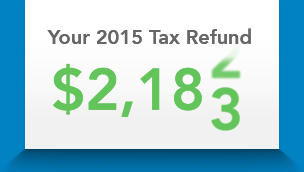Do I Have To Pay Provincial Income Tax?
In addition to paying federal income taxes, you also are responsible for paying provincial income taxes. "Tax rates vary by province, (but in every province,) your tax liability increases as your income increases," says Kevin Zhang, a Calgary, Alberta-based certified general accountant. Other factors that determine the amount of provincial income tax you pay include your work and family situation as these factors impact your tax liability and eligibility for tax benefits.
Income Tax Rates
Your federal tax rate is based on your income. This is the portion
of your taxable income that, prior to credits and benefits, goes
to taxes. As of 2014, the federal tax brackets are as follows:
* 15 percent of the first $43,953; if you earn this amount or
less, your rate is 15 percent; * 22 percent of the income between
$43,953 and $87, 907; * 26 percent of income between $87,907 and
$136,270; * 29 percent of income above $136,270.
In addition to paying this amount to the Canada Revenue Agency,
you pay an additional portion to your province. Alberta is the
only province that has a flat rate tax -- you pay 10 percent,
regardless of your income. The other provinces use a computation
method similar to the one used by the CRA. Take Manitoba, for
instance:
* you pay 10.8 percent on income $31,000 or less; * you pay 12.75
percent on income between $31,000 and $67,000; * you pay 17.4
percent on any income over $67,000.
Tax rates are similar on Prince Edward Island:
* you pay 9.8 percent on income $31,984 or less; * you pay 13.8
percent on income between $31,984 and $63,969; *you pay 16.7
percent on any income over $63,969.
Provincial Tax Credits
Many provincial tax credits also are available as federal credits.
Tuition credits, disability credits, the age amount, basic
personal amount and charity credits are some common examples of
credits that are available both federally and provincially.
Some credits are provincial, but not federal. Yukon has a small
business investment tax credit, for example, that pays residents
age 19 and older 25 percent of the amount of eligible shares they
invest in an eligible Yukon business. In Nunavut, residents may
qualify for a cost of living tax credit, which is calculated based
on income but does not exceed $1,200.
Calculating Your Tax Liability
Let's say you earn $50,000 per year and you live in Alberta. With
a 10 percent flat tax rate in Alberta, you would owe the province
of Alberta $5,000 in income tax. "Lower income (taxpayers are
responsible for) less tax. How much you owe is based on your
income," says Zhang. With a flat tax rate, you owe the same
portion of your income -- in this case, 10 percent -- regardless
to whether you earn $30,000 and your liability before tax credits
is $3,000, or you earn $300,000 and your liability is $30,000.
And, tax credits in the form of deductions decrease your taxable
income and tax liability.
If you have $10,000 worth of income deductions, reducing your
taxable income from $50,000 to $40,000, this decreases the tax you
owe to $4,000 [($50,000 -$10,000) x 10 percent]. Then, if you have
an additional $4,000 in tax credits that directly reduce your tax
liability, the amount of tax you owe could be reduced to zero.
If you earned that same $50,000, but you live in a province where
not only the tax amount, but the tax rate increases based on
income, you would calculate your tax liability differently. For
example, if the tax rate is 4 percent for income amounts under
$41,909 and 7 percent for amounts over $41,909, your tax
liability, before tax credits would be $2,242.73.
$41,909 x 4 percent = $1,676.36 $8,091 x 7 percent = $566.37
$1,676.36 + $566.37 = $2,242.73
You would then calculate any relevant income deductions and tax
credits.
Relocation Considerations
Guidelines determine your provincial residence if you lived in more than one province during the tax year. "Your provincial tax depends on where (you) lived December 31st," says Zhang. For instance, if you lived in British Columbia for most of the year but moved to New Brunswick in September and lived there through December 31st, New Brunswick would be your factual residence and you would file a New Brunswick tax return. If you have a temporary residence in another province, for tax purposes, "your residence is where (you) have family, kids, where (your) bank is," Zhang says.
References & Resources
- Kevin Zhang, CGA in Calgary, Alberta
- Canada Revenue Agency: Canadian Income Tax Rates for Individuals - Current and Previous Years
- AlbertaCanada.com: Low Personal Taxes
- Canada Revenue Agency: Provincial and Territorial Tax and Credits for Individuals
- Canada Revenue Agency: Your Province or Territory of Residence
- Canada Revenue Agency: Alberta
